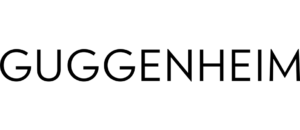Casey Kaplan


Woven and Folded: Tauba Auerbach and N. Dash Join the Guggenheim Collection
Solomon R. Guggenheim Museum
By Lidia Ferrara
Artists Tauba Auerbach and N. Dash are both makers of artifacts: non-figurative objects that are a testament to their creators’ nimble investigations of the systems, processes, and materials—both manmade and organic—that govern daily life and delineate human existence. Auerbach’s creative practice involves in-depth explorations of various topics, among them language, technology, and scientific phenomena. Her engagement with a range of mediums, including painting, sculpture, photography, and graphic design bravely navigates those murky depths where logical constructions, like visual patterns or mathematical equations, are pushed until they meet their comprehensible limits. Auerbach also uses her objects, images, and instruments to test hypotheses and map new possibilities. In a similar mode, N. Dash’s works in sculpture, painting, and photography give physical form to the intangible and the imagined. Her works, primarily made of natural materials such as linen and adobe, are the product of a multi-part practice that seeks to register lived experience and innate bodily intelligence through material. The Guggenheim recently welcomed paintings by both artists into the collection. Auerbach’s “Miter, Ray, Trans Ray” (2014), and N. Dash’s “Untitled” (2016)—both important examples of recent works in abstraction—significantly deepen the museum’s holdings of contemporary painting.
“Miter, Ray, Trans Ray”, acquired in 2015 through the International Director’s Council, presents the viewer with a monochromatic field of intricately interlaced canvas strips. The painting belongs to a series of woven works that are the product of Auerbach’s ongoing interest in topology: the mathematical study of shapes and spaces, or what the artist describes as “the architecture of connectivity.” “Miter, Ray, Trans Ray” presents the viewer with an orderly field repeatedly and frustratingly disrupted by oscillating areas of recession and projection, shadow and light, negative and positive space. The series makes use of familiar architectural motifs like the classic Greek fret pattern, or what the artist calls a “Chiral fret.” While subverting the continuous logic of the pattern, Auerbach also foregrounds the very nature of the work’s material support. “Miter, Ray, Trans Ray” employs the binary over-under logic of weaving—one of the oldest technologies—while at the same time evoking the pixelated fields of digital images. The work collapses accepted distinctions between the handmade and the digital, the flat and the sculptural, a painting’s surface and its support.
While Auerbach finds her inspiration through mathematic logic and scientific phenomena, N. Dash’s “primary source material” takes a different form. As she moves through the world, Dash carries with her a small piece of cloth, obsessively working it between her fingers until the fabric nearly loses all structural integrity. To Dash, these worn leavings are “alternative recording devices” through which the body is able to transmit information directly onto fabric. Dash arranges these delicate artifacts and photographs them; the resulting abstractions function as the origin of her practice. The artist’s paintings bear witness to this same tactile material engagement of siphoning of energy into form. Comprised of organic substances, the large-scale paintings, like “Untitled” (2016), now in the Guggenheim’s collection, take the form of carefully orchestrated juxtapositions between stretched and unstretched elements. Swaths of linen interweave with painted panels and jute twine, and elements rest upon, pull, dangle, and wrap, interacting with one another in a tense range of forces. Owing much of her inspiration to a revelatory experience at the site of an adobe building in the New Mexican desert, Dash sources the adobe directly from New Mexico before sifting and mixing it into pigment and using it as a rich, elemental base for her paintings. Like Auerbach’s works, Dash’s are physical indexes of the immaterial. Yet, rather than giving accessible physical form to heady scientific concepts, Dash’s compositions and the natural materials from which they are made testify to their own organic, haptic histories.
Both Dash’s “Untitled” and Auerbach’s “Miter, Ray, Trans Ray” are preceded by series that investigate the optical and conceptual possibilities of folded canvas and paper. Auerbach created her acclaimed Fold paintings, a body of work begun in 2009, by spray-painting the contours of crumpled swaths of canvas and then stretching the results, producing a convincing two-dimensional image of the flat canvas’ former three-dimensional state. Dash’s Commuter series is an ongoing project in which the artist repeatedly folds, unfolds, and refolds a piece of paper during her daily subway ride. Back in the studio, she “seals” the works with oil, pigment, or graphite powder. These wall-based works are two-dimensional in their final state, but the webs of creases on their surfaces point back in time to the process by which they were repetitively manipulated and moved through space in three dimensions. These works hover in the indeterminate zone between being planar fields and sculptural objects.
According to Auerbach, “opposites provide an opportunity for contemplating the possible limitations of words.”2 Paintings like Miter, Ray, Trans Ray ask whether opposites are a pre-existing part of nature, or “an easy way of thinking about or simplifying the infinite possibilities that confront us?” N. Dash too, is concerned with the restrictions and shortcomings of language. She has said of her delicate fabric sculptures: “Words can be limiting . . . this is one of the most effective ways in which I communicate.” Dash and Auerbach pick up where language and logic leave off. As rigorous explorations of process and material, their paintings traverse areas beyond what constructed schema can define or what words can describe.